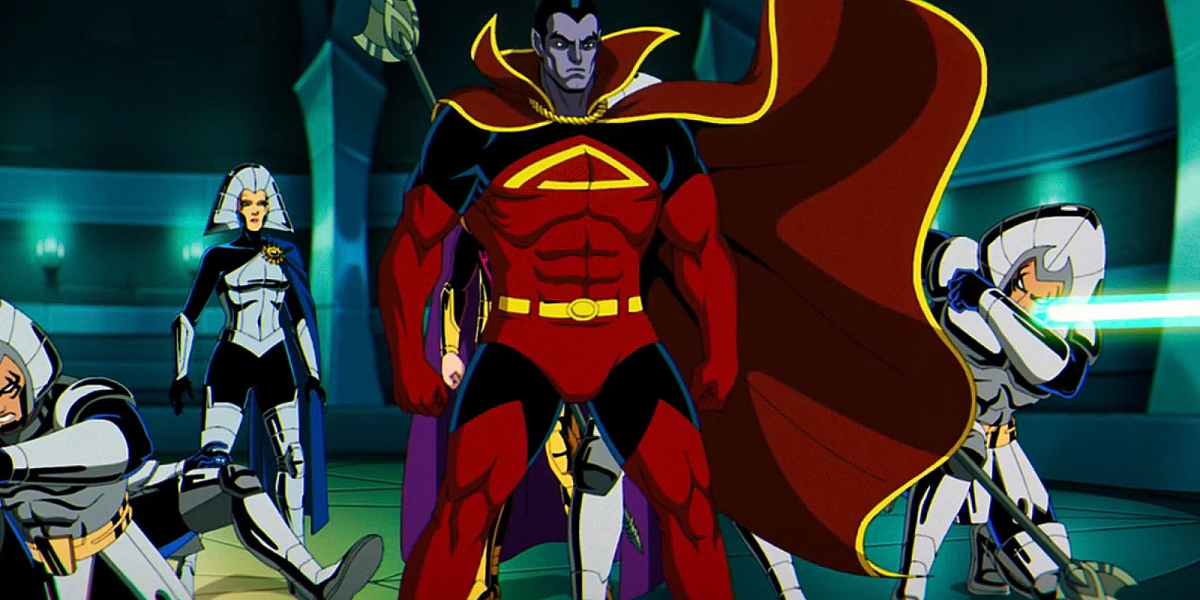Warning: The following article contains spoilers for X-Men ’97 Season 1, Episode 6, “Lifedeath – Part 2.”
X-Men ’97 Season 1 just introduced Gladiator and the Shi’ar Imperial Guard – many of whom are based on DC Comics characters. But which ones, exactly?
Related: X-Men ’97: Why Can Xavier Walk Now?
Which DC Characters Are Gladiator and the Imperial Guard Based On?
Created by writer Chris Claremont and artist Dave Cockrum for 1977’s X-Men #107, Gladiator and the Imperial Guard are modeled on DC’s Legion of Super-Heroes. This is especially obvious in Gladiator’s case, as his costume and superpowers clearly evoke those of Legion member Superboy. X-Men ’97 Season 1, Episode 6, “Lifedeath – Part 2,” doesn’t downplay the overlap between the two characters, either.
On the contrary, Gladiator comes across a lot like Superboy’s grown-up self, Superman, with his invulnerability, super strength, flight, and heat vision abilities. About the only Superman callback “Lifedeath – Part 2” doesn’t reference is Gladiator’s birth name: Kallark. This is a tongue-in-cheek mash-up of Superman’s Kryptonian and Earth names, Kal-El and Clark Kent.
Related: X-Men ’97: Who Launched the Sentinel Attack on Genosha?
What about the other Imperial Guard members – which Legionnaires are they based on? The team line-up in the X-Men ’97 universe includes Starbolt, Flashfire, Oracle, Smasher, Titan, Hobgoblin, and Astra. Their DC counterparts are Sun Boy, Lightning Lad, Saturn Girl, Ultra Boy, Colossal Boy, Chameleon Boy, and Phantom Girl, respectively.
Other members of the elite outfit, such as new recruit Vulcan, don’t have a Legion of Super-Heroes analog, though. This reflects the trajectory of Marvel’s X-Men comics, which have gradually shifted away from basing the Imperial Guard on DC characters.
Are Gladiator and the Imperial Guard in X-Men: The Animated Series?
Yes, Gladiator and his comrades show up on more than one occasion in X-Men ’97‘s precursor show, X-Men: The Animated Series. Gladiator debuts solo in Season 3, Episode 5, “The Phoenix Saga, Part III: The Cry of the Banshee.” And, as in “Lifedeath – Part 2,” the purple-skinned powerhouse shows off several of his Superman-inspired abilities in this episode. The following installment, “The Phoenix Saga, Part IV: The Starjammers,” then ushers in the rest of the Imperial Guard. They’re still on hand for “The Phoenix Saga, Part V: Child of Light,” which wraps up the “Phoenix Saga” storyline.
Related: X-Men ’97: Is Magneto Dead?
But that’s not it for the Shi’ar Imperial Guard. They return later in X-Men: The Animated Series Season 3, this time for the “Dark Phoenix Saga.” Indeed, the Imperial Guard plays a pivotal role in “Part III: The Dark Phoenix” and “The Dark Phoenix, Part IV: The Fate of the Phoenix,” dueling the X-Men on the Moon in the latter. Phoenix-centric content aside, Gladiator and Oracle also briefly cameo in Season 4, Episode 19, “Beyond Good and Evil, Part 2: Promise of Apocalypse.”
X-Men ’97 is now streaming on Disney+, with new episodes dropping Wednesdays.






Published: Apr 19, 2024 09:45 am